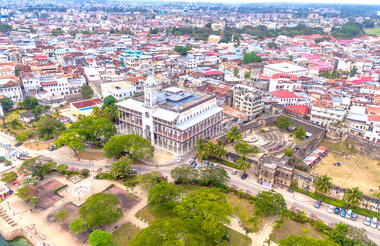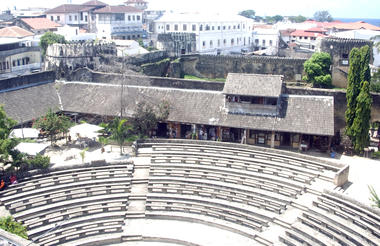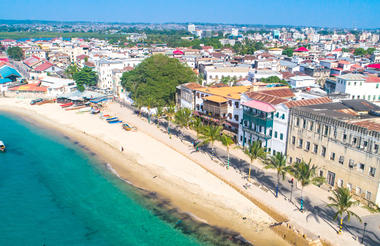The name Tanzania conjures up images of wildebeest stampeding across vast savannah, rain forests teeming with monkeys and birdlife, and great plains brimming with legions of game. All of these natural wonders and more are on offer in this exceptionally diverse African nation. Visitors typically visit Tanzania to partake in at least one of the four well-known Tanzanian tourist experiences: a relaxing seaside vacation on the picturesque island paradise of Zanzibar, an underwater tour of some of the world’s most renowned dive sites around the gorgeous Spice Islands, a safari adventure in some of Africa’s most impressive game reserves, or a hiking excursion around Mount Kilimanjaro National Park. Whichever of these incredible holidays you choose, you will undoubtedly be welcomed by some fabulously friendly and peaceful inhabitants who, despite being divided into 120 different ethnic groups and cultures, live in harmony with one another and provide some of the most wonderfully exotic local cuisine you could imagine. With all of this diversity on offer, the most difficult part of your Tanzanian holiday experience is likely to be deciding where to go!
Resting at the foot of Mount Meru, the sprawling city of Arusha is known as the safari capital of northern Tanzania. It serves as an excellent base from which to explore the remarkably scenic surrounding area which includes majestic Mount Kilimanjaro, as well as the Manyara, Tarangire and Ngorongoro National Parks. Arusha is a good spot to take a day or two off from the safari circuit as it features a temperate climate and lush surrounds. Visitors can look forward to exploring the wildlife-abundant Serengeti National Park; the magnificent Arusha National Park; and taking on the challenge of climbing Mount Meru, Africa’s fifth highest mountain.

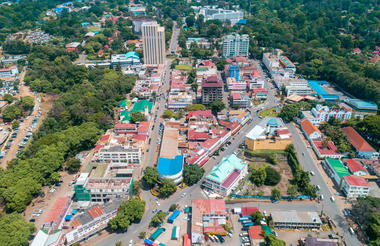
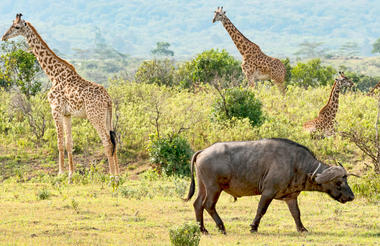
Situated in Tanzania’s central-northern region with the Lake Manyara to its east and the Manyara Escarpment to its west, the Lake Manyara National Park offers breathtaking views and a large variety of habitats supporting an array of wildlife. This small park is home to surprising biodiversity and features a magnificent landscape of acacia woodlands, forests, baobab strewn cliffs, algae-streaked hot springs, swamps and the lake itself. The park supports over 400 species of bird and the largest concentration of baboons anywhere in the world. Other species to spot include giraffes, zebras, wildebeest, impala, waterbuck, warthog, the Cape clawless otter, and the Egyptian mongoose. Don’t miss the opportunity to see thousands of flamingos on the lake, the renowned tree-climbing lions, and large families of elephants strolling through the forest.
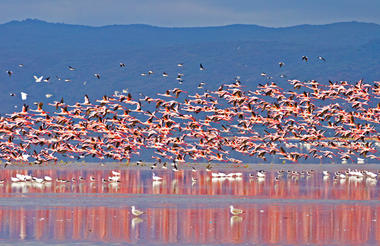
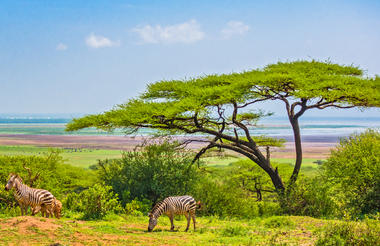
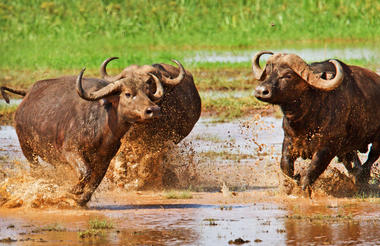
The Seronera region, in the central Serengeti, is set directly on the Great Migration route and offers excellent viewing of this incredible annual phenomenon, when countless wildebeest flood the area and move across the plains. While migratory game populations fluctuate seasonally, Seronera is still a wildlife hotspot at other times of the year, sheltering the Big Five, among many other species. A number of small campsites provide accommodation and visitors can enjoy hot air balloon trips and walking safaris as well as guided game drives.



Travellers heading for the Serengeti and Ngorongoro Crater will pass through the town of Karatu in the green hills of Tanzania’s northern highlands. Presided over by the towering Ol Deani Volcano, this small, colourful town serves as a popular overnight stop for visitors exploring the area’s many game parks. The town offers a variety of activities including browsing the bustling marketplace, sampling beer at a local brewery, visiting a traditional homestead, or taking a guided walk through the Ngorongoro Forest in search of waterfalls and caves. Whether you are looking for cultural tours, hiking and biking opportunities, a chance to enjoy an authentic rural Tanzania experience, or simply a break between safari game drives, this underrated town has plenty to offer.



Situated on the spectacular northeastern coast of Tanzania’s Unguja island, between the quaint coastal villages of Pwani Mchangani and Pongwe, Kiwengwa is best known for its scenic beach of glittering white sands, lapped by azure crystalline waters. Visitors can explore the local village, and enjoy a host of water-based activities including snorkelling, diving, kitesurfing, and boating. Sample the local flavours of Zanzibar’s unique cuisine, sip on a delicious cocktail at a beachfront bar, and discover the fascinating underwater wonderland that lies offshore. Visitors should be able to spot turtles, starfish, octopuses and seahorses quite easily. Animal lovers will also delight in the chance to visit the nearby Cheetah Rock Conservation Centre, which protects lions, zebras, and many other rescued animals.



Situated on the western coast of Zanzibar’s Unguja Island, UNESCO-listed Stone Town is the oldest part of Zanzibar City and is the cultural heart of the island. The town’s photogenic winding alleys are fringed by grand historic buildings, bustling bazaars, a glorious sultan’s palace, and the intriguing House of Wonders - named as such for exhibiting running water and electricity as never before in 1883. Stone Town also boasts numerous sacred buildings - over fifty mosques, six Hindu Temples, a Catholic, and an Anglican Cathedral - all of which are beautiful in unique ways. Other highlights include sunset dhow cruises; spice tours to aromatic distilleries; and neighbouring Changuu Island, home to stunning sandy beaches, a historic prison, and dozens of giant, ancient tortoises.
